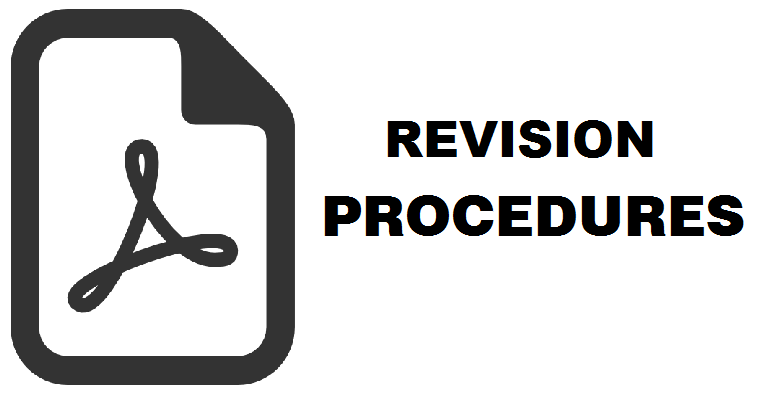Analisis Pemanfaatan Rumah Baca Apung oleh Masyarakat di Desa Tambak Lorok
Rizki Nurislaminingsih(1*), Roro Isyawati Permata Ganggi(2)
(1) Fakultas Ilmu Budaya Universitas Diponegoro, Semarang
(2) Fakultas Ilmu Budaya Universitas Diponegoro, Semarang
(*) Corresponding Author
Abstract
Rumah Baca Apung located in Tambak Lorok Village is a valuable asset belonging to the community that can be used as meeting hall and village library. In fact Rumah Baca Apung has not been utilized optimally in accordance with the function and purpose of building a library. Based on preliminary observations of the researchers, can be knew that the location is more often used as a place for discussion by the local people.Therefore, this study aims to further study the utilization of Rumah Baca Apung and the reasons behind the utilization. This research uses qualitative approach of case study with using data collection technique through interview, documentation study, and observation. The results of this study show that the use of Rumah Baca Apung has not been based on the function of education, research and preservation function of a library. Rumah Baca Apung also has not been used as a place to increase reading habit. Rumah Baca Apung is now used as a place of recreation, a place to discuss, socialize and counsel for the local people. The utilization of Rumah Baca Apung which has not yet represented the function of the village library is due to the limited quantity and quality of the collection books, the lack of educative games equipment, and the absence of learning companion teacher as a volunteer for the coastal children of Tambak Lorok.
Keywords
Full Text:
PDFReferences
Common Sense Media. Children, teens and reading: Common sense media research brief. (2014). Diakses 20 Juli 2017 dari https://www.commonsensemedia.org/research/children-teens-and-reading.
Denzin, N. K., & Lincoln, Y. S. (2009). Handbook of qualitative research. Yogyakarta: Pustaka Pelajar.
Fadli, R. (2016). Segera hadir, perpustakaan dan jembatan apung pertama di Indonesia. Dinamika Riset, III, 36–38. diakses 22 Juli 2017 dari http://litbang.pu.go.id/litbang/uploads/products/dinamika-reset/majalah-dinamika-riset-edisi-3-tahun-2016.pdf. .
Floating Library. (2014). A pop – up floating library: A board the Lilac Museum Steamship (press release). Diakses 20 Juli 2017 dari http://www.floatinglibrary.org/resources/PRESS-RELEASE.pdf.
Fuegi, D., Segbert-Elbert, M., & Lipeikaite, U. (2011). Public libraries in Africa – agents for development and innovation? Current Perceptions of local stakeholders. Presented at the World Library and Information Congress : 77th IFLA General Conference and Assembly, Puerto Rico: IFLA. Diakses 14 Agustus 2017 dari https://www.ifla.org/past-wlic/2011/183-fuegi-en.pdf. .
Kamaliyah, A. (2015). Pengaruh pemindahan Perpustakaan Umum Kabupaten Rembang ke lokasi pariwisata Pantai Kartini terhadap minat kunjung pemustaka. Berkala Ilmu Perpustakaan van Informasi, XI (2) 8-15.
Kementerian Pekerjaan Umum dan Perumahan Rakyat. (2016). Menteri Basuki resmikan balai warga dan rumah baca apung pertama di Indonesia. Diakses 2 September 2017 dari http://pu.go.id/berita/11934/Menteri-Basuki-Resmikan-Balai- Warga-dan-Rumah-BacaApung-Pertama-di-Indonesia.
Nurdin, N. (2016, November 25). Rumah Apung di Semarang bakal Jadi kawasan wisata -Kompas.com. Kompas. Diakses 18 Juli 2017 dari http://regional.kompas.com/read/2016/11/25/16153451/rumah.apung.di.semarang.bakal.jadi.kawasan.wisata.
Nurislaminingsih, R. (2016). Attitudes of fishermen in Tambak Lorok on library. Presented at the The 1st International Conference on Southeast Asia Maritime World, Semarang, 16-17 November 2016.
Nurislaminingsih, R., & Partini. (2016). Persepsi pemustaka dari latar belakang sosial yang berbeda terhadap fungsi perpustakaan (Studi di Perpustakaan Kota Yogyakarta). Berkala Ilmu Perpustakaan dan Informasi, 12(2), 159–165.
Pacheco, F. H., & Escamilla, D. Q. (2016). Human resources in Mexican public libraries: And exploratory inquiry. Investigacion Bibliotecologica, 30(68).
Ping, W., Shang, H., & Zenmeng, W. (2013). Chinese public library services for vulnerable groups. Chinese Librarianship: An International Electronic Journal, (35). Diakses 11 Agustus 2017 dari http://www.iclc.us/cliej/cl35WHW.pdf.
Satria, A. (2014). Pengantar sosiologi masyarakat pesisir. Jakarta: Yayasan Pustaka Obor Indonesia.
Sen, B. (2014). Multiple strategic orientations: the public library as a societal organization. Procedia-Social and Behavioral Sciences, 147, 111–119.
Sofianto, A. (2015). Model pendayagunaan perpustakaan desa untuk peningkatan pendidikan masyarakat di Desa Jiworejo, Kecamatan Jiken, Kabupaten Blora. Jurnal Litbang Provinsi Jawa Tengah, 13(1), 11–24.
Sutarno, N. (2008). Membina perpustakaan desa. Jakarta: Sagung Seto. Jakarta: Sagung Seto.
Syafwina. (2014). Recognizing indigenous knowledge for disaster management: Smong, early warning system from Simeulue Island, Aceh. Procedia Environmental Sciences, 20, 573 – 582.
Undang-Undang No 43 Tahun 2007 tentang Perpustakaan (2007). Diakses 1 Juni 2017 dari http://www.pnri.go.id/law/undang-undang-nomor-43-tahun-2007-tentang- perpustakaan/ ..
Yin, R. K. (2015). Studi kasus: Desain dan metode. Jakarta: Rajawali Pers.Article Metrics
Refbacks
- There are currently no refbacks.
Copyright (c) 2017 Berkala Ilmu Perpustakaan dan Informasi

This work is licensed under a Creative Commons Attribution-ShareAlike 4.0 International License.











